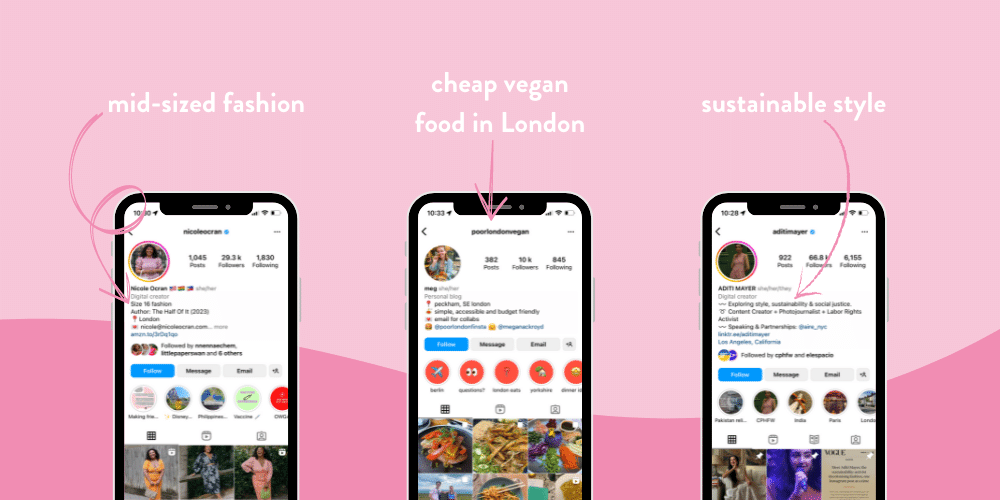The good news: influencer marketing remains one of the most powerful marketing tools at your disposal. In fact, by 2025, researchers estimate that the channel will reach another all time high with investments totalling $24 billion. Why? Because consumers want it more than ever.
The bad news: the way that consumers want to experience influencer marketing is changing. Which won’t come as a surprise to anyone who’s spent any amount of time in this fast-moving channel.
With investments soaring and the financial crisis placing greater pressure on the importance of a decent return, brands will need to keep up with these moving targets, adapting their strategies to placate and engage a restless audience and emerge on top.
Here are the big influencer marketing trends for 2023
1. Economy-conscious content
2023 will see the world grapple with the fallout of a global pandemic and international discord, meaning an inevitable hit to economies everywhere. As the cost of living rises for the average consumer (and soars in some major markets) influencers will need to be savvy in how they share branded content.
To avoid accusations of insensitivity or pushing consumerism in a time where many will have reduced spending power, influencers and brands should work together to reframe content from an economically friendly perspective. Consider highlighting product features that reflect durability or low cost-per-wear or use, or for fashion retailers specifically, encourage content in which influencers can highlight how to get the most out of your clothing: day to night challenges, for example, or one dress worn seven ways.
It’s also important to lean on branding activities here rather than put all your eggs in the performance basket. While this might sound counterintuitive (after all, it’s sales you need, right?), in times of turbulence, the trust consumers have in your brand can be the deciding factor when it comes to where they spend their money. As consumers look to brands for consistency and stability, investing in yours could be the smartest money you spend.
While there’s still a chance that you’ll see some reduction in sales figures in the short term, in the longer term, consumers will remember how you chose to promote your brand during these challenging times for the better. Or, of course, for the worse…
2. Niches get niche-r
‘Find your niche’ has long been the first advice offered to aspiring influencers. Whether you were a fashion guru, a restaurant connoisseur, or a crafting fanatic, clearly signposting what social media users could expect from your feed was crucial to building a following.
But much like the unquenchable thirst for authenticity, consumers are going to get even more picky and creators will double down to stand out from the competition, refining their niche and offering greater specificity when it comes to the content they share. Fashion influencers, for example, could come to centre their content around sustainable fashion or budget fashion, while foodie accounts could funnel themselves down to street food or home cooking.
This trend presents pros and cons for brands collaborating with influencers. On the one hand, this is exactly the kind of organic targeting that brands should want and which will ensure the maximum relevance of your offering without making your audience feel like their privacy has been compromised; on the other hand, if your product does have multiple relevant audiences then you may have to incorporate more influencers into your collaborations to achieve the same breadth of reach. This will likely require higher levels of investment and greater resources being deployed, but ultimately will lead to higher levels of efficacy than before.

3. Risk of backlash increases
The internet is undoubtedly a morally grey zone but where social media users are concerned (especially Gen Z and younger millennials) their compass tends to veer left and their judgement upon those who disagree is swift.
Our research found that a brand’s record on ‘causes’ like social justice and sustainability is one of the most important factors for 38% of Gen Z in deciding whether or not to shop with them. This agenda extends to the people they follow online and their recommendations. For influencers who are revealed to have a shaky history on matters that are important to their followers – or worse, are found to have acted hypocritically – then their account can be unofficially blacklisted overnight.
For influencers, this means more focus on their personal brand from a PR perspective. If there are skeletons in their closet, they will be uncovered so it’s generally better to get them out in the open yourself.
For brands, strict processes must be in place to vet influencers before embarking on collaborations. In-depth feed and sentiment analysis should be conducted and any risk of controversy should be carefully considered before taking the plunge.
4. 360° IGC
With social media users crying out for more ‘real’ people to showcase products, brands will find new and more innovative ways to incorporate influencers across their channels, even beyond the social media sphere.
Spotlighting influencer-generated content (IGC) on brand websites will become more common, and we’ll start to see influencers pop up in email campaigns, blown up in store or on billboards, and even making appearances at brand-owned events.
By repurposing IGC across multiple channels and platforms, brands will not only be maximising their investment and amplifying the peer-to-peer effect that influencer marketing provides, but they’ll be giving their audience exactly what they want.
5. Bye-bye vanity metrics
When Instagram first introduced the option to hide the number of likes a post received from your followers, it was hailed in some quarters as a move away from some of the less savoury elements of social media. As a harsher spotlight is placed on the emotional impact putting your life online for approval can have, we do expect to see a growing number of influencers taking advantage of the feature.
While we certainly don’t foresee this applying to the majority of creators, it is something that brands will need to bear in mind, particularly as Instagram moves toward the full-screen format already in trial in which ‘likes’ do not show on the main view anyway, hidden or not.
For some tactics, this will require a reframing of KPIs and objectives. However, it also presents a valuable opportunity for brands to potentially redirect performance initiatives and budget to more branding-oriented goals, the latter being much more in line with the direction social media users are urging brands to go, prioritising authentic brand-to-peer relationships over transparently sales-oriented advertising.
Take a look back at some of the shifts we saw in 2022 that informed these trends…

The endless cycle of consumer behaviours can feel like a nightmare for brands and the marketing teams tasked with keeping them relevant and exciting. Add in platform updates – or even whole new platforms – and those working in the influencer marketing space certainly have their work cut out for them.
But for the brands that adapt, especially the ones who invest budget, resources and creativity into their activities in the channel, influencer marketing still has a wealth of value to offer.


